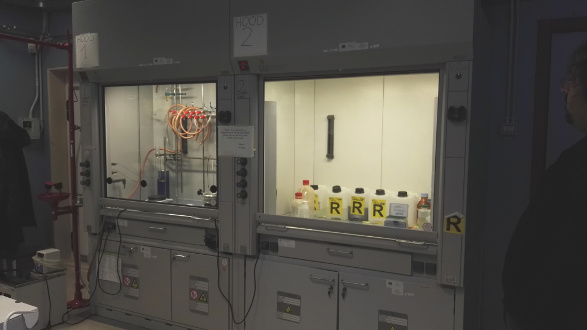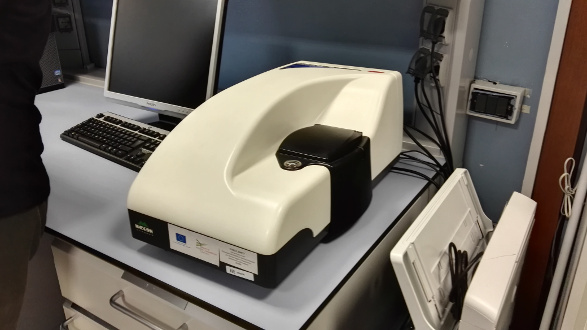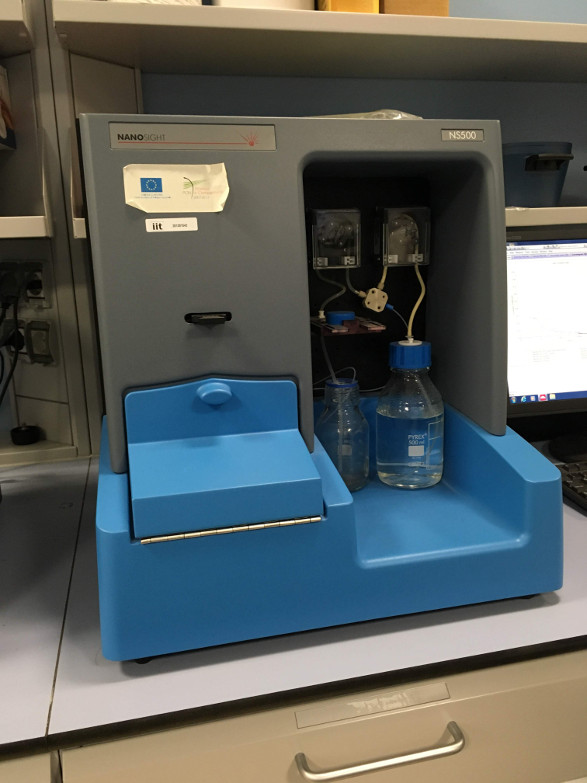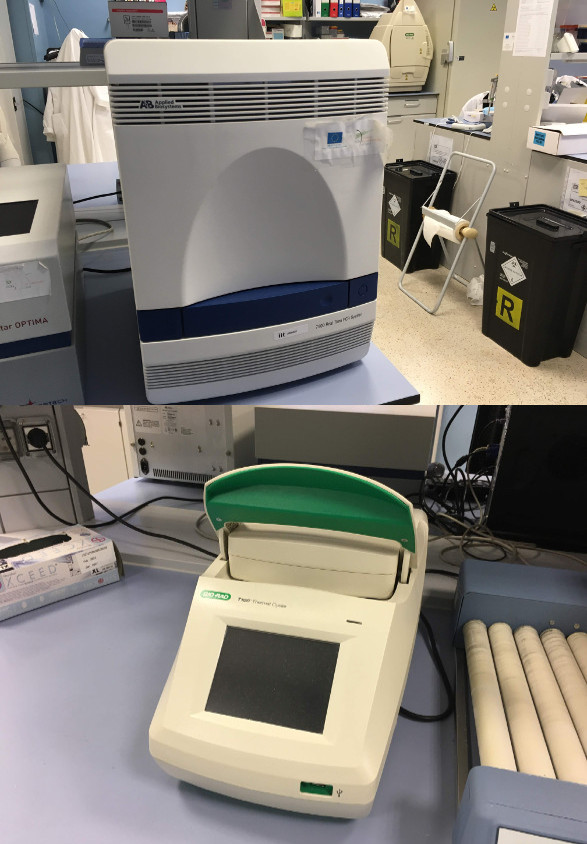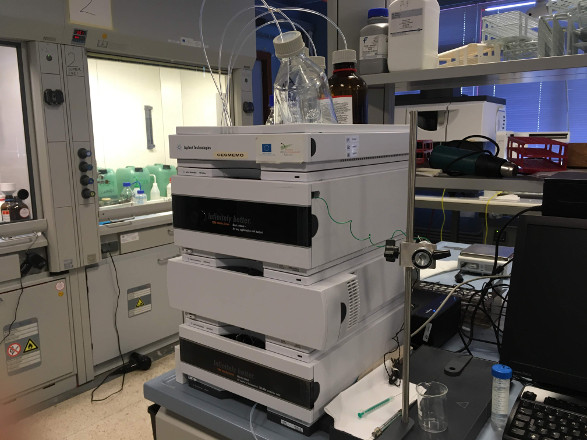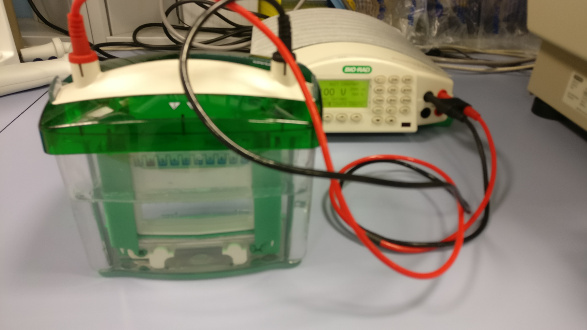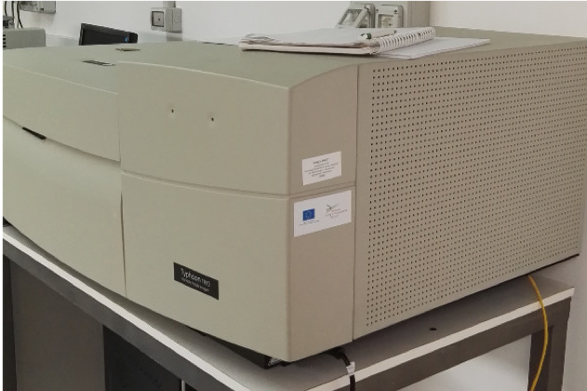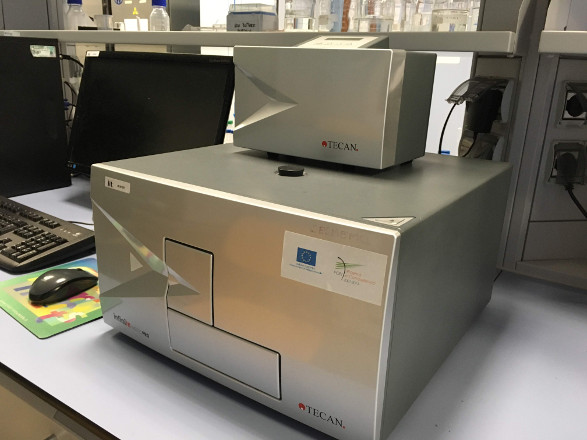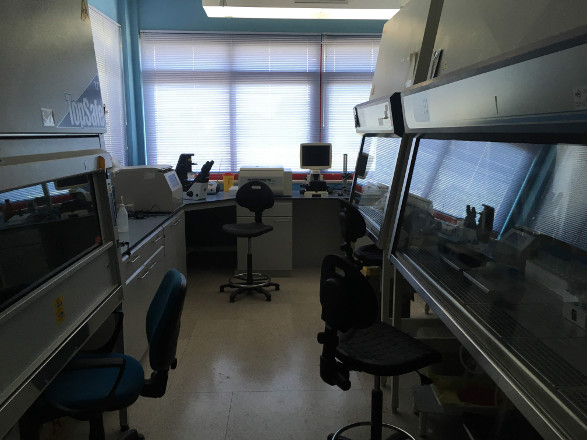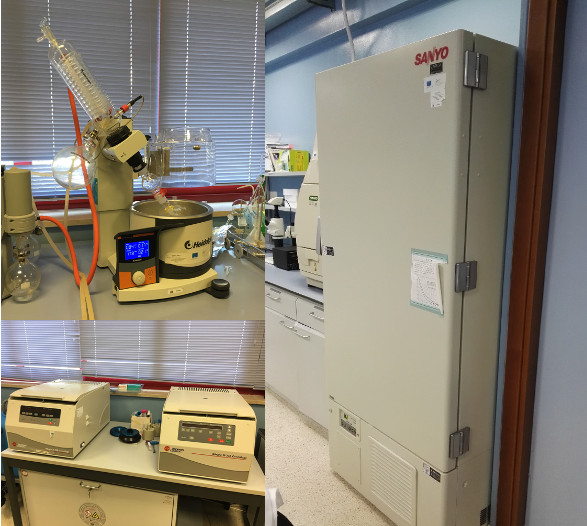The Nanobiointeractions Laboratory is a multidisciplinary experimental facility dedicated to the synthesis and characterization of engineered nanomaterials for biological applications. Here, researchers with a background in chemistry, biotechnology, pharmacy and pharmaceutical technology work together towards the development of innovative inorganic nanomaterials with potential application in biosensing, drug delivery, nanomedicine and diagnostic imaging. Besides nanomaterial preparation, the laboratory is also equipped for: a) the synthesis of organic molecules that are used as surface coatings, linkers and labels, b) the conjugation of biomolecules, c) the in vitro testing of the materials on mammalian cell cultures and on bacteria.
The person in charge for the lab is Dr. Virgilio Brunetti
